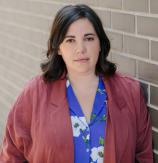The Third Rainbow Girl: The Long Life of a Double Murder in Appalachia
Review
The Third Rainbow Girl: The Long Life of a Double Murder in Appalachia
Digging into a cold case, author Emma Copley Eisenberg uncovers more than the facts. She uncovers and shares the shadows and light places in a rural culture that largely goes unnoticed in the American mainstream.
Forty years ago, in an attempt to revive the sizzling ’60s, a group of hip lifestylers decreed a Rainbow Gathering in the summer of 1980, in the unlikely backwoods of Appalachia, the eastern hills of West Virginia. Before they could get to the gathering after hitchhiking from Arizona, two hardy young women, Nancy Santomero and Vicki Duran, were killed. Their bodies, riddled with bullets, were discovered on June 25th, just before darkness fell. Eisenberg later lived and worked as a VISTA volunteer in Pocahontas County, very near where the bodies were found. Her work with teenagers there gave her a sense of connectivity to the local culture, and drove her to find out more about the pair of victims. In the process, she learned about herself and took the first steps toward becoming a writer.
"THE THIRD RAINBOW GIRL is a credit to Eisenberg’s tenacity and organizational skills. She delves diligently into the old stories of the Rainbow killings, and applies her store of cultural sensitivity and non-judgmental observation to the process."
The girls’ killer has never been found. The case ran cold after a few years, despite the community sentiment that something must be done, and the general depression and hysteria that hung over the county. After 12 years, building on confessions --- some of them coerced --- from a group of local men, a suitable perpetrator, farmer Jacob Beard, was identified, tried, found guilty and sentenced to life imprisonment without parole. He swore he was innocent. There was no physical evidence tying him, or anyone, to the crime.
Then in 1993, a serial killer named Joseph Paul Franklin confessed to the murders, insisting that Beard be given a new trial. Though much of Franklin's account was unsubstantiated, changing circumstances and unanswered questions led to a retrial in 2000 and a not guilty verdict for Beard. Franklin was executed for other crimes. The mystery of who shot the two girls probably will remain unsolved forever.
Eisenberg interweaves her own coming-of-age drama with the crisis that afflicted Pocahontas County for so many years. She was able to interview Beard and, later, a third woman, Liz, who had traveled with Nancy and Vicki from Arizona to attend the Rainbow fest.
THE THIRD RAINBOW GIRL is a credit to Eisenberg’s tenacity and organizational skills. She delves diligently into the old stories of the Rainbow killings, and applies her store of cultural sensitivity and non-judgmental observation to the process. Expressing a sense of bonding and obligation to everyone involved, to Appalachian folk ethos and West Virginia history, she reaches the conclusion that things are rarely what they seem, and there are no absolutes when dealing with the human heart and impulse.
Reviewed by Barbara Bamberger Scott on January 24, 2020
The Third Rainbow Girl: The Long Life of a Double Murder in Appalachia
- Publication Date: January 19, 2021
- Genres: Nonfiction, True Crime
- Paperback: 336 pages
- Publisher: Hachette Books
- ISBN-10: 0316449210
- ISBN-13: 9780316449212




